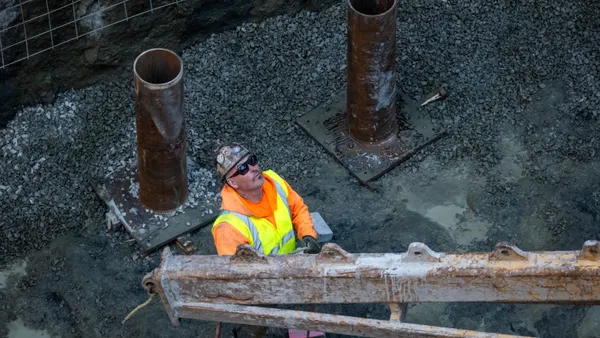Dive Brief:
-
Existing-home sales rose 0.7% in November to a seasonally adjusted annual rate of 5.61 million from a downward-adjusted rate of 5.57 million in October as interest rates begin to climb from historical lows, according to the National Association of Realtors.
-
The slight increase puts the category — which includes single-family homes, townhomes, condominiums and co-ops — on its highest pace since February 2007, which posted an annualized rate of 5.79 million sales, and up 15.4% from a year ago.
- The median existing sales price in November was $234,900, up 6.8% from a year ago and representing the 57th-straight month of year-over-year gains. Inventory declined for the 18th-consecutive month, with unsold properties at a 4-month supply, down from 4.3 months in October.
Dive Insight:
November’s strong report surprised analysts, who forecast sales to drop 1% to a rate of 5.50 million pace, according to Reuters. Instead, buyers sought to lock in a property amid a strengthening economy and current and forecasted increases in mortgage rates from historically low levels.
The gains came from strong activity in the Northeast, where sales rose 8% in November to a rate of 810,000 and are 15.7% ahead of the same period last year. The South region experienced a small gain from October and is 11.6% ahead of November 2015. The Midwest and South posted modest drops in sales month-to-month but area also strongly ahead for the year.
NAR Chief Economist Lawrence Yun credited minimal price growth in the Northeast for that region’s robust showing.
The share of first-time buyers, which typically target existing homes, was down from recent months at 32% in November compared to 33% in October but ahead of a year ago, when that group accounted for 30% of sales in the category. Forecasts of continued home-price increases and rising mortgage interest rates could limit the impact of this group on the market, which industry observers were counting on to bolster activity and help generate new construction.
"First-time buyers in higher priced cities will be most affected by rising prices and mortgage rates next year and will likely have to stretch their budget or make compromises on home size, price or location," Yun said in a release.
For more housing news, sign up for our daily residential construction newsletter.












